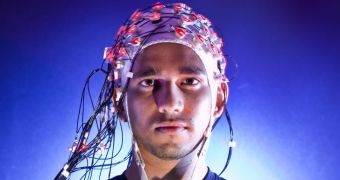The US National Science Foundation (NSF) is currently funding a number of scientific researches aimed at restoring some of the lost functionality to people who are completely paralyzed, or who suffer from degenerative diseases. This will be accomplished through brain-computer interfaces.
The NSF Center of Excellence for Learning in Education, Science and Technology (CELEST) and the Boston University are working together to free more than 50,000 Americans – and millions around the world – from their lock-in syndromes. People in this situation cannot communicate with anyone.
“People who have no other means of communication can start to control a computer that can produce words for them or they can manipulate what happens in a robot and allow them to interact with the world,” Boston University neuroscientist Frank Guenther says.
If this EEG-based approach has merit, then we could expect to see more and more advanced brain-computer interfaces as technologies advance and become more sensitive. At this point, the main issue is that the impulse-harvesting sensors are not subtle enough to pick up nuances from neurons.

 14 DAY TRIAL //
14 DAY TRIAL //